Power pole transformers, often seen mounted on utility poles in neighborhoods and along roadways, play a crucial role in modern electrical distribution systems. These essential devices are responsible for stepping down high voltage electricity from transmission lines to a safer, usable voltage for homes, businesses, and industries. Without them, the efficient delivery of electricity to end-users would not be possible, making power pole transformers an indispensable component of the grid.
This blog post will explore the fundamental workings of power pole transformers, their critical role in the electrical grid, and the technology behind their reliable performance. We will also discuss their various types and applications, the challenges they face, and their impact on energy efficiency and sustainability. By the end, you will gain a comprehensive understanding of why these seemingly simple devices are pivotal in powering our everyday lives.
What is a pole-mounted transformer and how does it work?
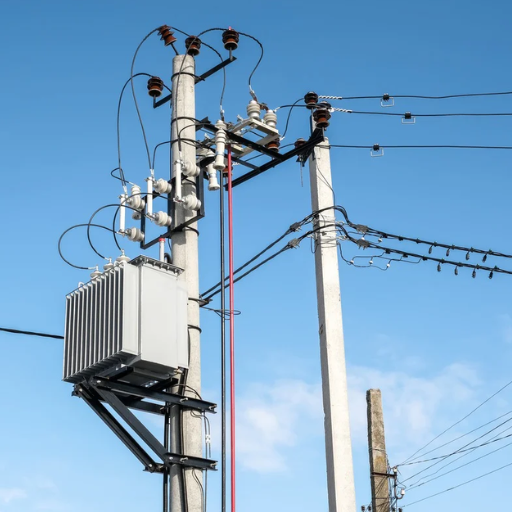
A pole-mounted transformer is an electrical device installed on utility poles to step down high-voltage electricity from power lines to a lower voltage suitable for use in homes or businesses. It operates through electromagnetic induction, where the primary coil receives high-voltage electricity, creating a magnetic field. This magnetic field induces a voltage in the secondary coil, which has fewer windings, resulting in the stepped-down voltage. The casing is designed to protect the internal components and withstand outdoor conditions, ensuring reliable performance in distributing electrical energy to end users.
Definition and basic function of pole transformers
Pole transformers, also referred to as distribution transformers, are essential components in the electrical distribution system. These devices are mounted on utility poles and are responsible for stepping down high-voltage electricity from the main power lines to a lower voltage suitable for use in homes and businesses. They operate using the principle of electromagnetic induction, where the primary coil handles the high voltage, and the secondary coil, with fewer windings, reduces the voltage to safer levels. Enclosed in durable, weather-resistant casings, pole transformers ensure reliable and efficient delivery of electricity to end users while withstanding environmental conditions. Their simple yet robust design makes them integral for maintaining stable and safe power distribution in urban and rural areas alike.
Components of a pole-mounted transformer
Pole-mounted transformers consist of several key components, each contributing to their functionality and reliability. The transformer tank houses the core and windings, protecting them from external factors. Inside, the core is constructed of laminated steel, which minimizes energy loss while transferring magnetic flux. The windings, made from copper or aluminum, step up or step down voltage levels based on the application.
The bushing provides insulated passage for conductors to connect external power lines to internal windings. An oil-filled reservoir acts as both an insulator and a cooling agent to regulate the transformer’s temperature. Additionally, a fuse or circuit breaker is included, offering protection against overloads or short circuits. Finally, the mounting brackets or clamps enable secure installation on utility poles, ensuring structural stability in diverse environments.
These components work seamlessly in tandem to ensure efficiency, safety, and longevity in power distribution systems.
How transformers change voltage levels
Transformers change voltage levels through a process based on electromagnetic induction. They consist of two main coils, the primary winding and the secondary winding, wrapped around a shared iron core. When an alternating current flows through the primary winding, it creates a magnetic field in the core, which induces a voltage in the secondary winding. The change in voltage level depends on the number of turns in each coil, known as the turns ratio. For example, if the secondary winding has more turns than the primary, the transformer increases (steps up) the voltage; if it has fewer turns, it decreases (steps down) the voltage. This ability to adjust voltage levels efficiently makes transformers essential components in power distribution, optimizing the delivery of electricity over long distances while minimizing energy loss.
Why are power pole transformers essential in electricity distribution?
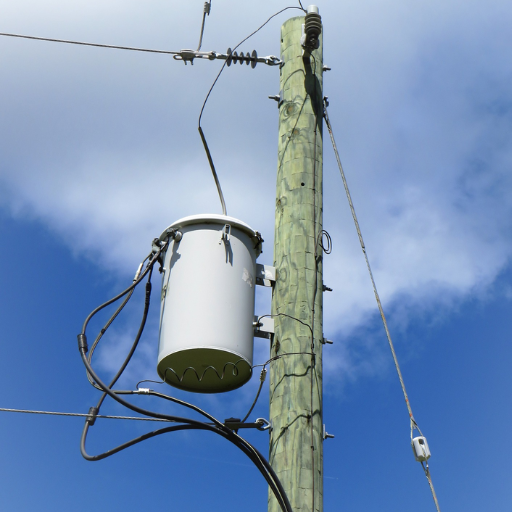
Power pole transformers are crucial in electricity distribution because they adapt the high-voltage electricity from power lines to lower, safer voltage levels suitable for residential and commercial use. By stepping down the voltage, they ensure efficient and reliable energy delivery to end users while maintaining safety standards. Their role in minimizing energy loss and stabilizing voltage is essential for the overall functionality of the electrical grid.
Role in the power distribution network
Pole transformers play a pivotal role in the power distribution network by converting high-voltage electricity transported through transmission lines into lower voltages suitable for end-user applications. Positioned at key points within the grid, they act as intermediaries between substations and consumers, ensuring the safe and efficient delivery of electricity. These transformers help mitigate energy losses during transmission, stabilize voltage levels to prevent damage to appliances, and enable electricity to reach even remote areas. By balancing energy demands and maintaining steady power flow, pole transformers are indispensable for the seamless operation of modern infrastructure and the reliable supply of electricity to homes and businesses alike.
Benefits of pole-mounted transformers in residential areas
Pole-mounted transformers provide reliable and efficient electricity distribution in residential areas. By stepping down high-voltage electricity from power lines to safer, usable levels for homes, these transformers ensure consistent and stable energy supply. Their elevated installation minimizes safety hazards and reduces the risk of physical damage caused by flooding or tampering. Additionally, pole-mounted transformers are space-efficient, eliminating the need for large ground-based equipment and preserving the aesthetic of neighborhoods. Their robust design and ability to serve multiple homes from a single installation make them a cost-effective solution for urban and suburban power distribution.
Importance in maintaining consistent power supply
Pole-mounted transformers play a crucial role in ensuring a reliable and uninterrupted power supply. By stepping down high-voltage electricity to usable levels, they efficiently distribute power to homes and businesses, reducing energy loss during transmission. Their elevated positioning protects them from physical disruptions like flooding while minimizing exposure to tampering or accidental damage. Additionally, these transformers are designed to handle fluctuations in demand, ensuring consistent voltage levels and preventing outages. Their durability and strategically placed installations make them indispensable in maintaining a stable and dependable power grid for urban and suburban communities.
What are the different types and sizes of pole transformers?
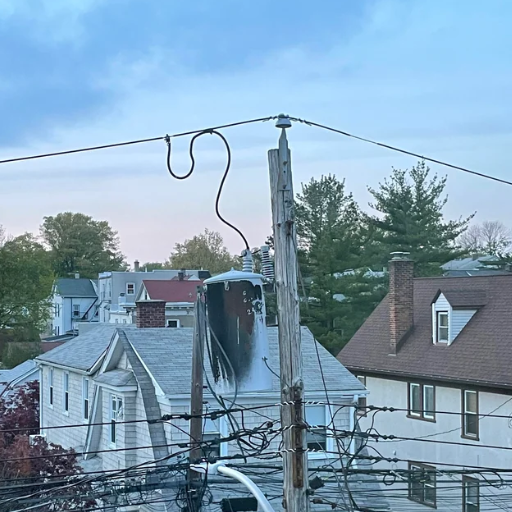
Pole transformers come in various types and sizes, tailored to meet diverse energy distribution needs. The most common types include single-phase and three-phase transformers. Single-phase transformers are typically utilized for residential areas, delivering power to households and small buildings. Three-phase transformers, on the other hand, are designed for industrial and commercial use, supporting higher energy demands and more extensive networks.
When it comes to sizes, pole transformers range from small units with a capacity of about 5 kVA for residential applications to larger models exceeding 100 kVA for industrial requirements. Transformers are selected based on load capacity, energy demand, and the specific characteristics of the power distribution network they are meant to support. This adaptability ensures efficient and reliable energy delivery to a wide variety of settings.
Common pole transformer sizes and capacities
Pole-mounted transformers are designed in various sizes and capacities to meet diverse power distribution needs. The most common sizes include:
5 kVA to 25 kVA: Typically used in residential areas, these transformers effectively handle the power requirements of homes and small neighborhoods.
25 kVA to 50 kVA: These are suitable for light commercial applications such as small businesses, schools, or farms.
50 kVA to 100 kVA and above: Designed for industrial settings or larger commercial operations, these units can manage significantly higher energy demands.
Capacity selection depends on factors like the number of connected loads, the type of equipment in use, and the distance of power transmission. Transformers are rated to maintain efficiency under peak load conditions while ensuring minimal energy loss.
Single-phase vs. three-phase pole transformers
When selecting between single-phase and three-phase pole transformers, it is essential to consider their applications, performance, and cost efficiency.
Single-phase pole transformers are ideal for residential and light commercial applications. They are simpler in design, cost-effective, and suitable for smaller loads, often supplying power to homes, farms, or small businesses. These transformers are easy to install and maintain, making them a popular choice in less densely populated areas.
Three-phase pole transformers, on the other hand, are built to handle larger, more complex energy demands such as those found in industrial, manufacturing, or commercial settings. They deliver power more efficiently over long distances and have better load balancing, which reduces equipment wear and enhances reliability. This makes them essential for supporting high-power machinery and extensive power networks.
The choice between these transformers depends on the scale, type of energy consumption, and overall infrastructure requirements. Single-phase models are efficient for smaller, localized setups, while three-phase systems are indispensable in larger, high-demand operations.
Specialized transformers for specific applications
Specialized transformers are designed to fulfill unique roles across various industries, ensuring optimal performance for specific applications. For instance, isolation transformers are crucial in sensitive electronics to eliminate noise and enhance safety by providing electrical separation between circuits. Step-up and step-down transformers are widely used in power distribution to adjust voltage levels, accommodating long-distance transmission or point-of-use requirements. Additionally, autotransformers, with their single winding design, offer improved efficiency for applications with minor voltage adjustments.
Oil-filled transformers and dry-type transformers cater to environmental and operational needs; the former is favored for high-capacity performance in outdoor settings, while the latter excels in interior applications with lower maintenance requirements. Instrument transformers, such as current and potential transformers, ensure accuracy in measuring high voltages and currents, making them indispensable in metering and protective relays. These specialized transformers underscore the adaptability of transformer technology to meet diverse, application-specific demands.
How are electrical pole transformers installed and maintained?
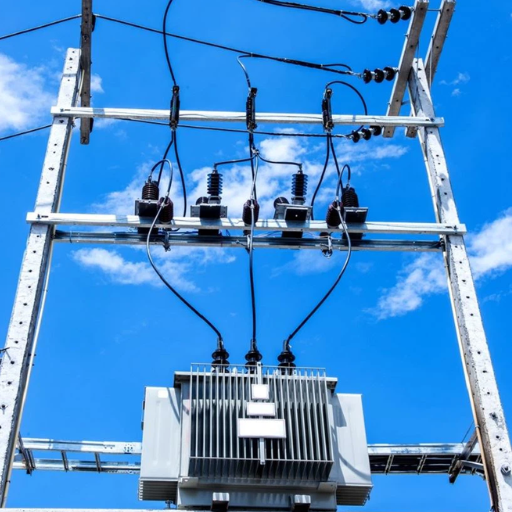
The installation of electrical pole transformers begins with a thorough site inspection to assess suitability and safety. Once the location is confirmed, the transformer is securely mounted on a pole using a crane or other lifting tools. Proper grounding is established to ensure safety and functionality. The electrical connections are then carefully made, linking the transformer to the power lines and the local distribution network.
Maintenance involves regular inspections, checking for physical damage, corrosion, and oil leaks. Oil levels and quality are monitored to ensure effective insulation and cooling. Transformers are also periodically tested for proper functionality, including load and insulation resistance checks. Prompt repairs and part replacements during inspections help prevent failures and ensure long-term reliability.
Installation process on utility poles
The installation of transformers on utility poles follows a precise and structured process to ensure safety and efficiency. First, the site is evaluated to confirm the pole’s structural integrity and its ability to support the transformer’s weight. Next, proper grounding is established by installing grounding wires, reducing the risk of electrical faults. The transformer is then lifted into position using specialized equipment, such as a crane or bucket truck, and securely mounted onto the pole using durable brackets and hooks. Electrical connections are made next, including the attachment of high-voltage wires and low-voltage service lines. Insulation and protective devices, such as lightning arresters and fuses, are installed to safeguard the transformer and network from surges or faults. Finally, all connections are tested, and the installation is inspected to meet safety and operational standards before the transformer is energized.
Regular maintenance and inspection procedures
Regular maintenance and inspection of transformers are essential to ensure reliable performance and prevent outages. Inspections should include checking for oil leaks, unusual noises, or signs of overheating. Oil quality tests, including dielectric strength and moisture content analysis, should be performed periodically. Additionally, bushings, connections, and cooling systems must be examined for wear, corrosion, or blockages. Visual checks for proper grounding and insulation integrity are also critical. Routine thermographic imaging can help detect hot spots, while electrical tests such as winding resistance, insulation resistance, and turns ratio tests ensure operational efficiency. Following a systematic maintenance schedule enhances safety, extends the transformer’s lifespan, and minimizes downtime.
Troubleshooting common issues with pole transformers
When pole transformers encounter problems, efficient troubleshooting is essential to prevent prolonged outages and further complications. Below are common issues and their causes, alongside potential solutions:
Overheating
Overheating can occur due to overloaded circuits, insufficient cooling, or internal faults. Regularly monitor load levels and ensure the transformer is not operating beyond its capacity. Check for blocked cooling fins or fans and clean them if needed. For internal failures, specialized testing and repairs may be necessary.
Oil Leaks
Transformer oil leaks, often caused by degraded seals or physical damage, can compromise insulation and cooling. Inspect gaskets and seals for wear and promptly replace damaged components. Address physical damage to the tank or fittings, ensuring the oil level is adequate for proper operation.
Noise or Vibrations
Unusual noise or vibrations may result from loose components, magnetostriction effects, or an unstable foundation. Conduct a thorough inspection to tighten any loose bolts or fittings and confirm that the transformer is securely mounted. If the noise persists, it may indicate internal damage requiring expert diagnostics.
Voltage Irregularities
Fluctuations in output voltage can stem from issues such as damaged windings, poor connections, or a failing tap changer. Check all electrical connections for integrity and use diagnostic tests like insulation and winding resistance measurements to pinpoint faults. Address damaged components promptly.
Lightning or Surge Damage
Lightning strikes or sudden power surges can compromise the transformer’s internal mechanisms. Inspect surge arresters and grounding systems for damage or improper installation. Replace or repair damaged components and ensure the grounding system meets safety standards.
By systematically addressing these common issues and implementing preventive measures, pole transformers can maintain optimal performance and reliability.
What safety considerations are associated with power pole transformers?
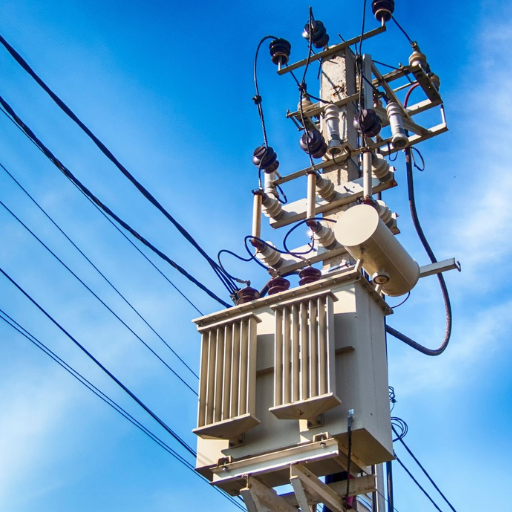
Power pole transformers require strict adherence to safety protocols to ensure both public and worker safety. Key considerations include maintaining a safe distance from live electrical components to prevent accidental contact, ensuring proper installation and maintenance to avoid equipment failure, and using personal protective equipment (PPE) during repairs. Additionally, regular inspections of grounding systems and surge arresters are essential to mitigate risks from lightning or power surges. Public awareness about the dangers of tampering with or approaching transformers is also crucial in reducing accidents.
Electrical hazards and precautions
Like any hazard, electrical risks may be harmful, but accidents can be avoided by taking safety measures. Frequent hazards include contact with live wires, electrical arcs, and equipment failures. To prevent these hazards, adequate distance from live electrical parts, proper insulation, and lockout/tagout (LOTO) procedures during maintenance must be observed. Also, workers should be protected against burns and shocks through the use of personal protective equipment such as rubber gloves and arc rated clothing.
Insulated, covered, or grounded wires that are not able to carry current should be checked regularly for any damage. Grounding systems should also be checked to ensure that they will function in the event of a surging lightning strike. As an additional measure, surge-protection devices should be fitted as well. Also important, as internal precautions, are training programs for workers and external campaigns for public education about electrical equipment and the dangers of substations and transformers.
Environmental concerns and transformer oil management
In the operation of transformers, oil is the most important component used for insulation and cooling. However, the oil requires careful management to reduce its negative imapct on the environment. For example, oil spills and leakages can contaminate water and soil, which in turn can be detrimental to ecosystems and human health. In order to mitigate these issues, laws and regulations enforce certain methods of handling, storing and disposing of \transformer oil in a way that protects the environment. Nanaging waste by reconditioning used oil and recycling oil reduces waste and meets environmental regulations. Also, the use of oils that are free of toxins and non-biodegradable substances helps reduce damage to the ecosystem. Proper environmental policies would require organization to enforce strict monitoring and response procedures to any oil spills to prevent any damage from such events.
Public safety measures around pole-mounted transformers
Even if pole-mounted transformers have the best advantage of facilitating effective power splitting, if not managed properly, everything else becomes a safety concern. In regard to public safety, the following factors must be covered:
Scheduled Maintenance for Tools: Utilities must carry out proactive maintenance to include looking for loose physical connections, damage, and oil leaks. If damage control is done within a reasonable timeframe, it helps avoid malfunction and protects people and property in the vicinity.
Barrier To Safety: Warning signs restrictively denying access should be posted in a manner that prevents unrestricted access. Barrier fences can protect children and pedestrians who often visit those areas.
Clearance Vegetation: Planting control around transformer areas helps reduce the risks of damage to power equipment from branch falls, as well as serve during extreme weather fire hazards.
Surge Protection Arrest: Surge arresters for thunderstorms and connected grounding systems can greatly reduce the chances of lightning and power surges to One Pole Mount transformers most probably causing public explosions or other electrical dangers.
Public awareness campaigns: Educating the general public about the dangers of meddling with pole transformers can encourage community safety. Programs can inform the public about safe practices which may include reporting damages or suspicious activities.
By implementing these measures, utility companies can ensure continuous service without putting the health of local residents at risk.
How do pole transformers fit into the larger power grid?
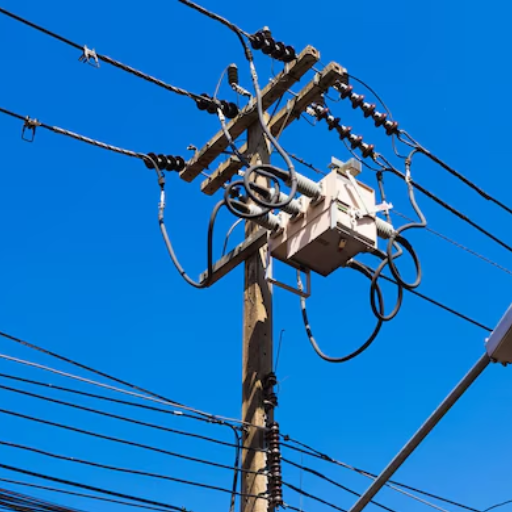
Pole transformers play a critical role in the larger power grid by stepping down high-voltage electricity from distribution lines to a safer, usable voltage for homes and businesses. They act as essential links between the primary distribution network, which carries electricity over long distances, and the secondary distribution network, which connects directly to end-users. By efficiently reducing voltage levels, pole transformers ensure that electricity is delivered reliably and safely to meet the demands of everyday use. Without them, the high-voltage electricity in the grid would be unsuitable for residential and commercial applications.
Connection between substations and pole transformers
Substations and pole transformers work together as critical components in the electrical distribution system. Substations serve as hubs where high-voltage electricity from power plants is received, stepped down, and distributed to various networks. They reduce electricity to medium voltage suitable for distribution lines. Pole transformers, located on utility poles or underground, handle the next phase by stepping down this medium-voltage electricity to a lower, safe voltage for homes and businesses. This coordinated system ensures efficient energy flow, allowing electricity to travel long distances from generation facilities to end-users without excessive energy loss or safety risks.
Role in primary and secondary distribution systems
Primary Distribution Systems
Primary distribution systems operate at medium voltage levels, typically ranging from 4 kV to 35 kV, and are responsible for transmitting electricity from substations to local distribution transformers. These systems play a crucial role in efficiently delivering power to designated areas, often functioning as the backbone of urban and suburban electricity supply. The design prioritizes minimal energy loss and high reliability to ensure consistent service to various end-users.
Secondary Distribution Systems
Secondary distribution systems handle electricity at much lower voltage levels, typically 120V to 480V, making it safe and usable for homes, businesses, and small industries. This step occurs after the electricity passes through distribution transformers, which step down the voltage from the primary distribution level. Secondary systems ensure that the energy supplied meets the specific consumption needs of appliances and equipment, completing the final leg of the electricity supply chain. Together, primary and secondary systems seamlessly connect sources of power to end-users, maintaining functionality and safety standards.
Integration with smart grid technology
The integration of smart grid technology with secondary distribution systems revolutionizes how electricity is delivered and managed. Smart grids employ advanced sensors, smart meters, and real-time data analytics to optimize energy distribution, enhance reliability, and minimize waste. These systems enable two-way communication between utilities and consumers, allowing for dynamic adjustments to electricity demands. Additionally, smart grids support the incorporation of renewable energy sources, such as solar and wind, by efficiently balancing supply and demand. This integration not only reduces operational costs but also ensures grid resilience against outages and supports a sustainable energy future.
What advancements are being made in pole transformer technology?
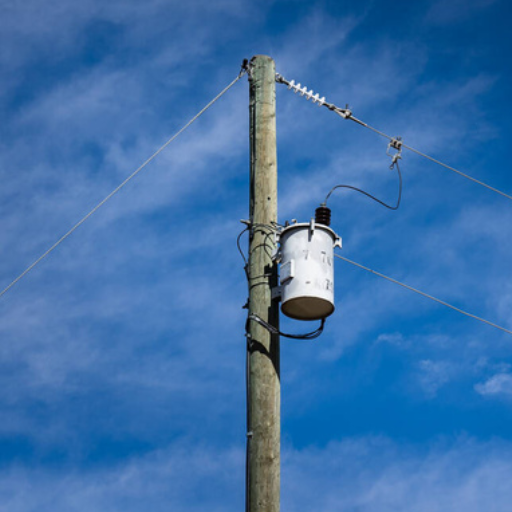
Advancements in pole transformer technology focus on improving efficiency, durability, and compatibility with modern energy systems. Modern pole transformers are being designed with higher energy efficiency to minimize losses, often utilizing amorphous core materials that reduce core losses. Advanced monitoring systems are now integrated to provide real-time data on performance and potential issues, allowing for predictive maintenance and enhanced reliability. Additionally, many pole transformers are being developed to better integrate with renewable energy sources, handling bidirectional power flow and supporting grid stability. These innovations ensure pole transformers remain adaptable to the evolving demands of smart grid systems.
Innovations in transformer design and efficiency
Modern innovations in transformer design aim to enhance energy efficiency and operational performance while reducing environmental impact. The adoption of amorphous metal core transformers represents a major advancement, as these cores significantly lower no-load losses compared to traditional silicon steel cores. Compact designs and advanced insulation materials are also being utilized to improve thermal performance and reduce transformer size. On the efficiency front, new high-temperature superconducting (HTS) transformers are emerging, offering lower energy losses and higher power density.
Additionally, digitalization is transforming transformer technology with integrated smart sensors and IoT-enabled analytics. These systems provide real-time data on factors such as temperature, oil levels, and load conditions, enabling predictive maintenance and extending asset lifespan. Combined with their ability to support renewable energy integration and bidirectional power flow, these modern transformers are playing a crucial role in creating sustainable, smart grid networks.
Smart transformers and remote monitoring capabilities
Smart transformers represent a significant leap in electrical grid technology, offering unparalleled efficiency and adaptability. These advanced devices are equipped with embedded processors, sensors, and communication modules that enable real-time monitoring and control. By continuously collecting data on load conditions, voltage levels, and temperature, smart transformers identify potential issues before they become critical, reducing downtime and maintenance costs.
Remote monitoring capabilities further enhance their functionality by utilizing IoT-enabled systems to transmit data to centralized platforms. Operators can analyze this information to optimize energy use, ensure grid stability, and facilitate predictive maintenance strategies. Additionally, smart transformers support grid modernization initiatives, such as integration with renewable energy sources and the implementation of bidirectional power flow to accommodate distributed energy resources.
Overall, smart transformers with remote monitoring are key to building a resilient, efficient, and sustainable energy infrastructure for the future.
Future trends in power distribution and transformer technology
Power distribution and transformer technology are evolving rapidly to meet the demands of modern energy systems. One significant trend is the adoption of solid-state transformers (SSTs), which utilize semiconductors and advanced materials to provide greater efficiency, flexibility, and grid compatibility. These transformers enable rapid voltage regulation, bidirectional power flow, and seamless integration with renewable energy sources like solar and wind.
Another key development is the expansion of digital twin technology. By creating virtual models of transformers and power systems, operators can simulate performance, predict failures, and optimize maintenance schedules with pinpoint accuracy. This innovation significantly reduces operational costs and enhances reliability.
The shift toward decentralized power generation is also influencing transformer design. With the rise of microgrids and distributed energy resources (DERs), transformers are being tailored to support localized power systems, ensuring stability, efficiency, and energy independence.
Lastly, artificial intelligence (AI) and machine learning are reshaping transformer management. These tools analyze vast amounts of grid data in real-time, enabling predictive maintenance, grid optimization, and fast response to changing energy demands. Together, these technological advancements are paving the way for smarter, more sustainable power distribution systems.
References
Frequently Asked Questions (FAQ)
Q: What is the function of electrical pole transformers in the electrical system?
A: Electrical pole transformers are vital components in the electrical system that convert high voltage electricity from power lines into a lower voltage suitable for use in homes and businesses. They play a crucial role in minimizing power loss during the transmission of electrical current.
Q: How do transformers work in power distribution?
A: Transformers work by using coils to transfer electrical energy between circuits through electromagnetic induction. This process allows transformers to convert high voltage electricity to low voltage levels, ensuring efficient distribution of power from the power source to end users.
Q: Why are pole mounted transformers preferred in certain locations?
A: Pole mounted transformers are often used in locations where underground installations are impractical or too costly. They are ideal for areas with existing electrical infrastructure, as they can be mounted on concrete poles or wooden poles, saving space and reducing installation costs.
Q: Can you explain the construction and installation of electrical pole transformers?
A: The construction and installation of electrical pole transformers involve mounting the transformer on a pole, connecting it to the electrical lines, and ensuring it is properly grounded. Electrical engineers typically oversee the installation to ensure safety and efficiency in the flow of electricity.
Q: Are there specific transformer manufacturers for pole transformers?
A: Yes, there are many transformer manufacturers across the globe that specialize in the production of pole transformers. Companies like Daelim Transformer are known for producing high-quality power transformers that cater to various electrical distribution needs.
Q: Where can one find a pole transformer for sale?
A: A pole transformer for sale can be found through various transformer manufacturers and electrical supply companies. It’s important to ensure that the transformer meets the specific requirements for your electrical system before purchasing.
Q: What factors are considered when selecting ideal locations for electrical pole transformers?
A: When selecting locations for electrical pole transformers, factors such as proximity to power lines, accessibility for maintenance, and safety considerations are taken into account. The aim is to optimize the distribution of power while minimizing potential disruptions.
Q: How do electrical engineers ensure the efficient operation of a transformer?
A: Electrical engineers ensure the efficient operation of a transformer by regularly monitoring its performance, conducting maintenance checks, and making adjustments as necessary to maintain the optimal flow of electricity and prevent power loss.
Q: What are the advantages of using a power transformer in an electrical system?
A: Using a power transformer in an electrical system offers several advantages, including improved efficiency in energy transmission, reduced power loss, and the ability to safely convert electrical current to suitable voltage levels for different applications.









